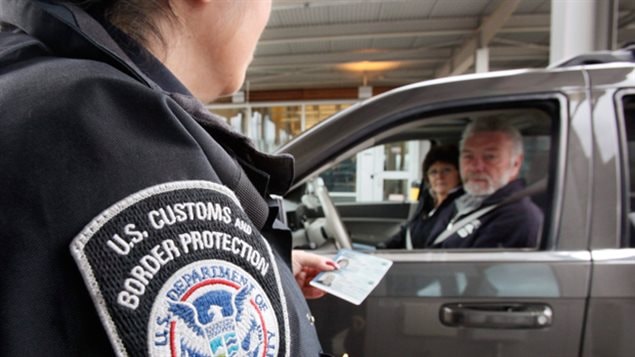Despite a spate of news reports about Canadians being turned away at the U.S. border since U.S. President Donald Trump announced his controversial travel bans earlier this year, it appears that fewer–not more–Canadians are being refused entry.
U.S. Customs and Border Protection statistics show 2,600 Canadian travellers were rejected during the first two months of this year, down from 3,500 during the same period in 2016.
Moreover, refusals of Canadians at American land crossings dropped 8.5 per cent between October and the end of February, compared with the same five-month period a year earlier.
Canadian immigration and civil liberties advocates say the numbers may not tell the whole story.
Immigration lawyer Lorne Waldman says the decreased rate of refusal could be the result of people being better prepared than they used to be, and so fewer are being turned away as a result.

“People in Canada used to take it for granted that they could just go to the border . . . but that’s no longer the case,” Waldman says.
“The heightened awareness because of all the publicity around immigration has led people to be much more cautious about crossing the border.”
The Canadian Civil Liberties Association says the number of rejections isn’t its only concern.
“There’s been an increase in temporary detentions and increasingly invasive searches, including searches of electronic devices,” says Brenda McPhail, the director of the CCLA’s privacy, technology and surveillance project
“The numbers don’t say anything about whether or not the number of searches have increased, (or) whether or not the amount of time that people are being detained at the border before they are being let through has changed.”
After Trump announced his first executive order in January banning immigration from seven mainly-Muslim countries, 200 Canadian participants in the Canada-U.S. trusted traveller program NEXUS had their express-entry cards temporarily revoked.
It was never clear whether they were also denied entry to the U.S. or were allowed in after going through normal security screening measures.
During the same period, other Canadians said they were refused entry.
The new U.S. data doesn’t disclose the specific reasons for refusals so it’s unclear whether there’s been a change in why people are being turned back.
There are more than 60 reasons someone can be turned away
The new U.S. Homeland Security chief, retired general John Kelly, told The Canadian Press news agency earlier this month that if a traveller is stopped for additional screening, or is turned away, it may be because his name has turned up on a watch list, or there is a problem with his credentials.
“There is a reason why,” he said. “It’s not their race, it’s not their religion, it’s not the language they speak.”
The Toronto District School Board, Canada’s largest, said earlier this month it would no longer be booking school trips to the U.S.
That followed an announcement by Girl Guides of Canada, which said it was cancelling future trips to the U.S.







For reasons beyond our control, and for an undetermined period of time, our comment section is now closed. However, our social networks remain open to your contributions.